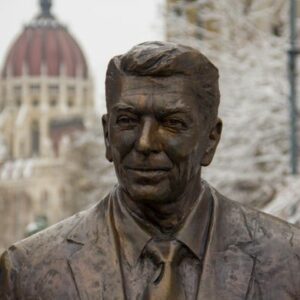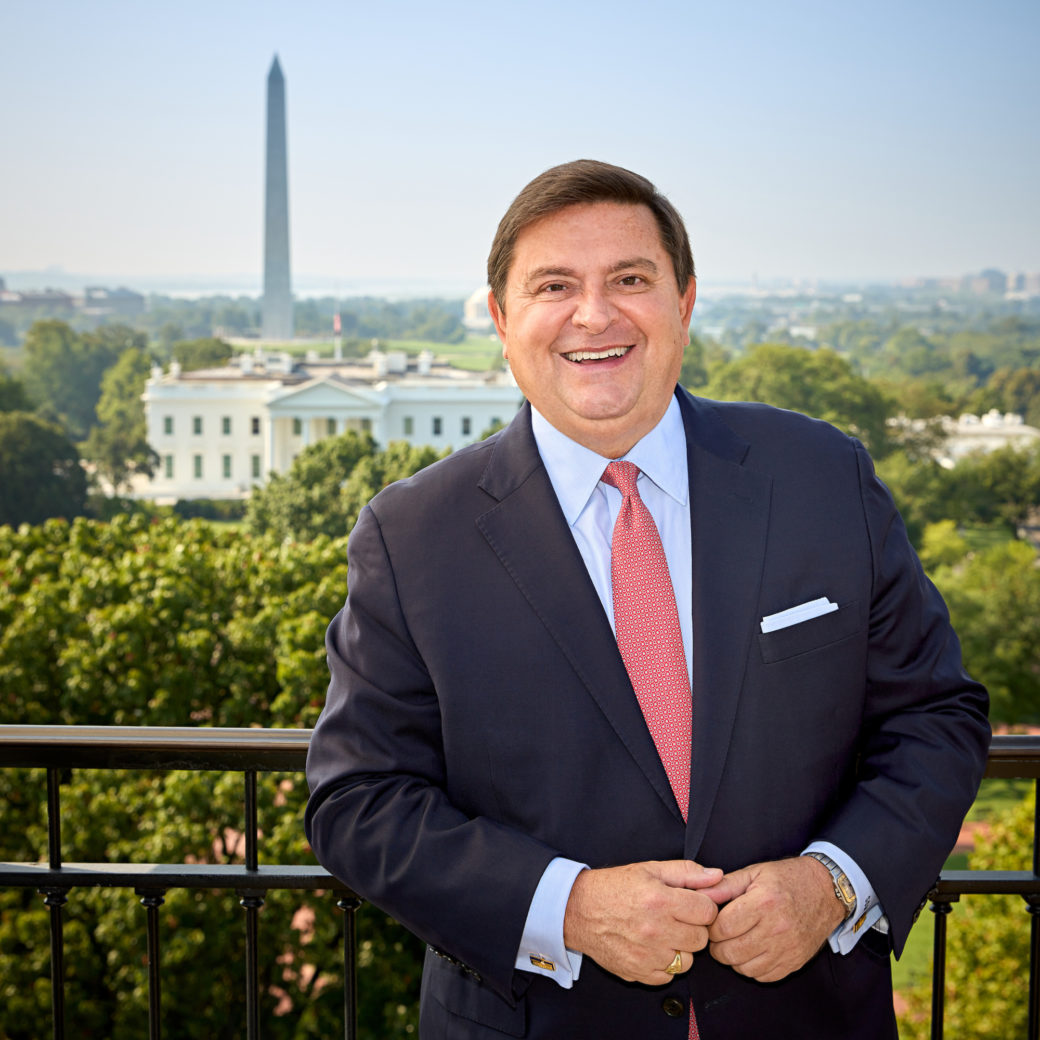Presidents’ Day provides a moment to reflect on how America’s chief executives have shaped and reflected our history. But our presidents and first ladies have also been history-makers overseas, symbolized by dozens of statues and monuments to American presidents in countries large and small around the world. This Presidents’ Day, the White House Historical Association is partnering with U.S. embassies around the world for international wreath-laying ceremonies at many of these statues and monuments.
Last year we were honored to set a wreath at the Abraham Lincoln statue in the Old Calton Burial Ground in Edinburgh, Scotland, the first erected in Europe to honor a U.S. president, in 1893. Lincoln did not live to visit Scotland as he hoped, but he loved to quote Robert Burns and other Scottish writers and poets. The statue, created with the support of John D. Rockefeller and Andrew Carnegie, also honors the many Scots who volunteered for the Union Army during the Civil War.
Statues of Lincoln can also be found in several cities in Mexico, honoring his opposition to slavery, his antipathy as a Congressman to the U.S. annexation of Mexican territory, and the 16th president’s support for Mexican democratic reformist Benito Juárez (sometimes called “the Abraham Lincoln of Mexico”). And in 2011 — to mark the 150th anniversary of Russian Czar Alexander II’s liberation of the serfs, which coincided with Lincoln’s efforts to abolish slavery — a statue was unveiled in Moscow depicting a fanciful emancipators’ handshake between Lincoln and the czar.
Most of the more than 40 statues of U.S. presidents abroad can be found in Europe, frequently honoring the U.S. contributions to freedom in their countries. A 30-foot statute of Woodrow Wilson stands at the entrance to Prague’s largest train station, marking Wilson’s role in championing Czech independence after World War I. Nazi Germany destroyed it after seizing Czechoslovakia, and the Communist regime removed a plaque put in its place, but a new edition of the statue was installed in 2011.
In Athens near the U.S. Embassy, a 12-foot statue honors President Truman and his administration for providing $2 billion in aid to Greece to resist efforts to install a communist regime there as the Cold War began after World War II.
Statues of President Ronald Reagan were erected across Central and Eastern Europe after the Cold War, including in Bulgaria and at Freedom Square in Hungary’s capital. One of two in Poland commemorate Reagan’s meeting with Polish Pope John Paul II, whose visits to his homeland in the late 1970s and 1980s increased pressure on its communist rulers.
Three decades after the fall of the Berlin Wall, a statue of Reagan — who was made an honorary citizen of Berlin — was unveiled at eye-level with the Brandenburg Gate, near where Reagan stood as he called on Soviet leader Mikhail Gorbachev to tear down the wall.
Kosovo unveiled a statue of Bill Clinton for launching NATO’s air campaign to halt killings of ethnic Albanians by Serbian troops in 1999. And George W. Bush, the first president to visit Albania, is remembered there with a 9-foot statue showing him with his sleeves rolled up.
London is home to half a dozen statues commemorating American presidents, including one of George Washington overlooking Trafalgar Square, leaning on 13 rods to represent the American colonies. A memorial to Franklin Roosevelt — funded by British citizens in less than a week despite late 1940s rationing and hardship — stands in Grosvenor Square. Dwight D. Eisenhower’s statue shows him clad in his general’s uniform, facing the building where he commanded Allied forces in World War II.
John F. Kennedy’s lineage and tumultuous visit to Ireland just five months before his assassination — a trip that he called “the best four days of his life” — are commemorated by a statue at a family homestead in Bruff. A bust of Kennedy in Cameroon was also unveiled in 2007 to commemorate the anniversary of the Peace Corps arrival there.
Even a lesser-known president, Rutherford B. Hayes, is remembered in Paraguay with a statue and other honors memorializing his decision resolving the nation’s land dispute with Argentina following a bloody war. When diplomats from the two nations came to Washington asking him to help resolve the dispute, Hayes’s decision gave Paraguay 60 percent of its present territory and helped guarantee its survival as a nation.
The wreaths to be laid on Presidents’ Day remind us of how intertwined our history is with that of other nations. Understanding how and why other nations have honored our presidents can help us better understand our history, our country, and the world.





